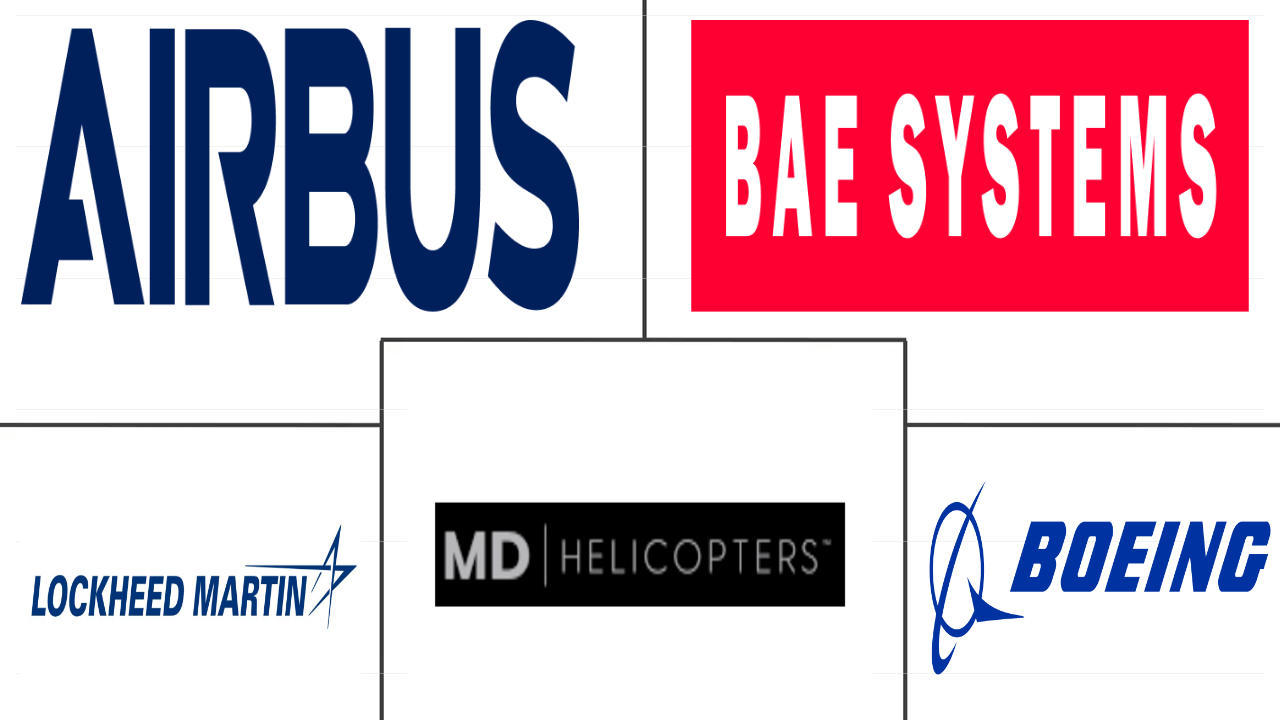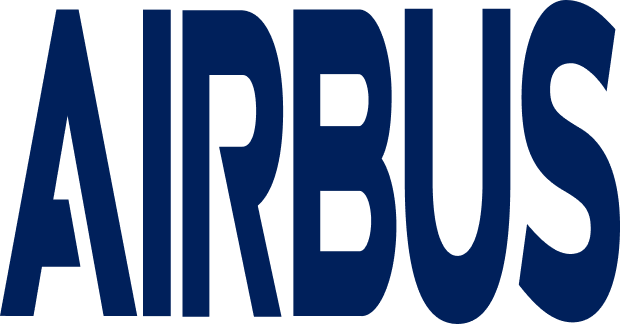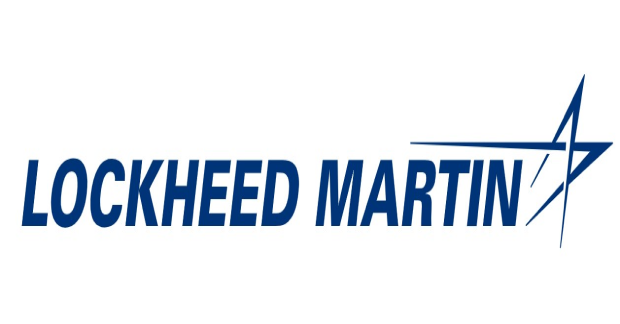UK Military Aviation Market Size
|
|
Study Period | 2017 - 2030 |
|
|
Market Size (2024) | USD 878.88 Million |
|
|
Market Size (2030) | USD 977.70 Million |
|
|
Largest Share by Sub Aircraft Type | Fixed-Wing Aircraft |
|
|
CAGR (2024 - 2030) | 1.79 % |
|
|
Fastest Growing by Sub Aircraft Type | Fixed-Wing Aircraft |
Major Players |
||

|
||
|
*Disclaimer: Major Players sorted in no particular order |
UK Military Aviation Market Analysis
The UK Military Aviation Market size is estimated at 878.88 million USD in 2024, and is expected to reach 977.70 million USD by 2030, growing at a CAGR of 1.79% during the forecast period (2024-2030).
878.9 M
Market Size in 2024 (USD)
977.7 M
Market Size in 2030 (USD)
178
Total Deliveries in the Historic Period (2017-2023)
128
Total Deliveries during the Forecast Period (2024-2030)
Largest Market by Sub-Aircraft Type
54.75 %
value share, Fixed-Wing Aircraft, 2023
The country's focus on enhancing its combat capabilities by procuring technologically advanced combat aircraft drives the market's growth.
Largest Market by Body Type
45.25 %
value share, Multi-Mission Helicopter, 2023
The ability to carry heavy payloads in short, unprepared, and semi-prepared airstrips is driving the country to procure transport aircraft.
Leading Market Player
52.69 %
market share, The Boeing Company, 2022

The company leads the UK military aviation market by relying on its diverse skills and technologically advanced facilities across the country.
Second Leading Market Player
22.38 %
market share, Airbus SE, 2022

The company's ability to provide its most advanced fighter jets with superior lethality, connectivity, and survivability is driving it to capture a major market share.
Third Leading Market Player
19.66 %
market share, Lockheed Martin Corporation, 2022

The company's purpose-built helicopters with more cost-effective solutions are driving its market share in the military aviation market.
The country is focusing on the procurement of new-generation aircraft, thereby boosting the growth of the military aviation market
- According to the recently released Defense Equipment Plan for 2021-2031, the United Kingdom intends to upgrade its armed forces by procuring advanced military platforms to prepare for potential threats. Over the following 10 years, beginning in 2021, the country aims to spend USD 321 billion on the purchase and support of equipment. The country is allocating a significant amount of funds to its military to achieve this goal. The country's military budget for 2022 was USD 68.5 billion, a rise of 3.7%. Out of the total government spending, the country has allocated 2.2% of its share to the military. Its NATO membership commits the United Kingdom to devote 2% of its annual GDP to defense. Currently, the country dedicates more than 2% of its GDP to the military.
- The United Kingdom's rising military spending is driving the purchase of new-generation aircraft that may strengthen its aviation capabilities. On this note, the United Kingdom ordered 123 fixed-wing aircraft, which include F-35B (114) combat aircraft, under the Future Combat Air System to replace the country's Eurofighter Typhoon fleet. The country also ordered two Airbus A400M transport aircraft, two P-8A Poseidon, and three E-7A special mission aircraft.
- The United Kingdom also placed an order for 54 helicopters, which include AH-64E (40) multi-mission rotorcraft and CH-47 (14) transport helicopters. All the rotorcrafts are scheduled for delivery by 2028. These helicopters are procured to modernize the country’s armed forces and counter any emerging threats in the future. On this note, the AH-64E will replace the Apache AH1, and the CH-47 will be upgraded to the latest Block II standard.
UK Military Aviation Market Trends
Rising geopolitical threats are the driving factor for rising defense expenditure
- As a member of NATO, the United Kingdom is committed to spending 2% of its GDP on defense each year. The country's military budget for 2022 was USD 68.5 billion, a rise of 3.7%. Out of the total government spending, the country has allocated 2.2% of its share to the military. At present, the United Kingdom spends more than 2% of its gross domestic product (GDP) on military expenses.
- According to the recently published Defense Equipment Plan for 2021-2031, the United Kingdom plans to modernize its armed forces to combat future threats. The nation plans to spend USD 321 billion (GBP 238 billion) on equipment procurement and support over the next 10 years, starting from 2021 to 2022. The Army Command allocated USD 55.7 billion (GBP 41.3 billion) to aircraft procurement, including an allocation for AH-64 Apache attack helicopters.
- For the purpose of expanding the naval fleet, the British Navy plans to spend USD 43.2 billion (EUR 38.1 billion). Fundings of USD 39.7 billion (EUR 35 billion), USD 58.8 billion (EUR 58.1 billion), and USD 24.4 billion (EUR 21.5 billion) were provided to the UK Strategic Command, the Defence Nuclear Organization, and the Strategic and Combat Air Program, respectively. The UK Ministry of Defence also announced its plans to procure additional F-35s and A400M aircraft in the coming years. The Air Command plans to retire equipment that is becoming increasingly obsolete in the digital and future operational environments.
An increased defense budget is expected to help with the procurement of more aircraft and helicopters, thereby boosting the country’s active fleet size
- Eurofighter Typhoons, F-35, A400M, and C-130J aircraft form the backbone of the UK Royal Air Force. As of April 2022, the UK MoD was in negotiations with the F-35 Joint Project Office to purchase another tranche of F-35 jets. This second batch will consist of 26 aircraft apart from the 48 already under contract. The first batch of 48 aircraft deliveries are expected to be completed by 2025. The RAF plans to have three frontline F-35B squadrons, each with a strength of 12-16 aircraft.
- It also plans to retire Typhoon Tranche 1 and Hawk T1 by 2025 to enhance the efficiency of its fleet. Air Command also planned to retire the BAe146 as scheduled in 2022 and the C130 Hercules in 2023. The E7 Wedgetail, the next-generation airborne command and control aircraft, will replace the E-3D Sentry.
- The United Kingdom is planning to buy additional A400M transport aircraft. It placed an order for 22 A400M, of which 20 were delivered as of February 2022. The remaining two aircraft were expected to be delivered in the latter half of 2022. Earlier, in 2021, the United Kingdom’s Royal Air Force also signed a deal for 14 new extended-range CH-47 Chinooks. Deliveries of AH-64E Apache Guardian are ongoing for the British Army as it aims to strengthen its aerial combat capabilities.
- Although UK defense plans to retire several aging aircraft, it will have to actively continue the procurement of replacement aircraft to avoid any gaps within the fleet. The country's continued support for Ukraine in its war with Russia may add pressure on its defense budget. This factor may threaten the country's usual place as Europe’s largest defense spender.
OTHER KEY INDUSTRY TRENDS COVERED IN THE REPORT
- Rising economic growth is expected to support the country's growth
UK Military Aviation Industry Overview
The UK Military Aviation Market is fairly consolidated, with the top five companies occupying 157.66%. The major players in this market are Airbus SE, BAE Systems, Lockheed Martin Corporation, MD Helicopters LLC and The Boeing Company (sorted alphabetically).
UK Military Aviation Market Leaders
Airbus SE
BAE Systems
Lockheed Martin Corporation
MD Helicopters LLC
The Boeing Company
Other important companies include Embraer, Textron Inc..
*Disclaimer: Major Players sorted in alphabetical order.
UK Military Aviation Market News
- June 2023: Airbus Flight Academy Europe, a subsidiary of Airbus that supplies training services for the pilots and civilian cadets of the French Armed Forces, signed a memorandum of understanding (MoU) with AURA AERO.
- May 2023: The US State Department approved a potential sale of CH-47 Chinook helicopters, engines, and equipment worth USD 8.5 billion to Germany.
- March 2023: Boeing has been awarded a contract by the US government to manufacture 184 AH-64E Apache attack helicopters for the US military and international customers. The US government announced USD 1.95 million, indicating that the helicopter will be delivered to the US military and overseas buyers - specifically Australia and Egypt - as a part of the paramilitary process to the Foreign Service (FMS) from the US government. Contract completion is expected by the end of 2027.
Free with this Report
We provide a complimentary and exhaustive set of data points on global and regional metrics that present the fundamental structure of the industry. Presented in the form of 45+ free charts, the section covers data on commercial aircraft deliveries by manufacturer, backlogs of commercial aircraft, active military aircraft fleet by type of aircraft, overall business jets and helicopters fleet by manufacturer and also classified by type of ownership.
UK Military Aviation Market Report - Table of Contents
1. EXECUTIVE SUMMARY & KEY FINDINGS
2. REPORT OFFERS
3. INTRODUCTION
- 3.1 Study Assumptions & Market Definition
- 3.2 Scope of the Study
- 3.3 Research Methodology
4. KEY INDUSTRY TRENDS
- 4.1 Gross Domestic Product
- 4.2 Active Fleet Data
- 4.3 Defense Spending
- 4.4 Regulatory Framework
- 4.5 Value Chain Analysis
5. MARKET SEGMENTATION (includes market size in Value in USD and Volume, Forecasts up to 2030 and analysis of growth prospects)
-
5.1 Sub Aircraft Type
- 5.1.1 Fixed-Wing Aircraft
- 5.1.1.1 Multi-Role Aircraft
- 5.1.1.2 Training Aircraft
- 5.1.1.3 Transport Aircraft
- 5.1.1.4 Others
- 5.1.2 Rotorcraft
- 5.1.2.1 Multi-Mission Helicopter
- 5.1.2.2 Transport Helicopter
- 5.1.2.3 Others
6. COMPETITIVE LANDSCAPE
- 6.1 Key Strategic Moves
- 6.2 Market Share Analysis
- 6.3 Company Landscape
-
6.4 Company Profiles
- 6.4.1 Airbus SE
- 6.4.2 BAE Systems
- 6.4.3 Embraer
- 6.4.4 Lockheed Martin Corporation
- 6.4.5 MD Helicopters LLC
- 6.4.6 Textron Inc.
- 6.4.7 The Boeing Company
- *List Not Exhaustive
7. KEY STRATEGIC QUESTIONS FOR AVIATION CEOS
8. APPENDIX
-
8.1 Global Overview
- 8.1.1 Overview
- 8.1.2 Porter’s Five Forces Framework
- 8.1.3 Global Value Chain Analysis
- 8.1.4 Market Dynamics (DROs)
- 8.2 Sources & References
- 8.3 List of Tables & Figures
- 8.4 Primary Insights
- 8.5 Data Pack
- 8.6 Glossary of Terms
List of Tables & Figures
- Figure 1:
- GROSS DOMESTIC PRODUCT, USD, UK, 2017 - 2030
- Figure 2:
- ACTIVE MILITARY AIRCRAFT FLEET, NUMBER OF AIRCRAFT, VOLUME, UK, 2016 - 2030
- Figure 3:
- DEFENSE SPENDING, USD, UK, 2017 - 2030
- Figure 4:
- NUMBER OF NEW AIRCRAFT DELIVERIES, VOLUME, UK, 2017 - 2030
- Figure 5:
- NUMBER OF NEW AIRCRAFT DELIVERIES, USD, UK, 2017 - 2030
- Figure 6:
- MILITARY AVIATION DELIVERIES BY SUB AIRCRAFT TYPE, VOLUME, UK, 2017 - 2030
- Figure 7:
- MILITARY AVIATION DELIVERIES BY SUB AIRCRAFT TYPE, USD, UK, 2017 - 2030
- Figure 8:
- MILITARY AVIATION DELIVERIES BY SUB AIRCRAFT TYPE, VOLUME %, UK, 2017 VS 2023 VS 2030
- Figure 9:
- MILITARY AVIATION DELIVERIES BY SUB AIRCRAFT TYPE, VALUE %, UK, 2017 VS 2023 VS 2030
- Figure 10:
- FIXED-WING AIRCRAFT DELIVERIES BY BODY TYPE, VOLUME, UK, 2017 - 2030
- Figure 11:
- FIXED-WING AIRCRAFT DELIVERIES BY BODY TYPE, USD, UK, 2017 - 2030
- Figure 12:
- FIXED-WING AIRCRAFT DELIVERIES BY BODY TYPE, VOLUME %, UK, 2017 VS 2023 VS 2030
- Figure 13:
- FIXED-WING AIRCRAFT DELIVERIES BY BODY TYPE, VALUE %, UK, 2017 VS 2023 VS 2030
- Figure 14:
- UK MILITARY AVIATION MARKET, BY MULTI-ROLE AIRCRAFT, UNITS, 2017 - 2030
- Figure 15:
- UK MILITARY AVIATION MARKET, BY MULTI-ROLE AIRCRAFT, USD, 2017 - 2030
- Figure 16:
- UK MILITARY AVIATION MARKET, BY BODY TYPE, USD, %, 2023 VS 2030
- Figure 17:
- UK MILITARY AVIATION MARKET, BY TRAINING AIRCRAFT, UNITS, 2017 - 2030
- Figure 18:
- UK MILITARY AVIATION MARKET, BY TRAINING AIRCRAFT, USD, 2017 - 2030
- Figure 19:
- UK MILITARY AVIATION MARKET, BY BODY TYPE, USD, %, 2023 VS 2030
- Figure 20:
- UK MILITARY AVIATION MARKET, BY TRANSPORT AIRCRAFT, UNITS, 2017 - 2030
- Figure 21:
- UK MILITARY AVIATION MARKET, BY TRANSPORT AIRCRAFT, USD, 2017 - 2030
- Figure 22:
- UK MILITARY AVIATION MARKET, BY BODY TYPE, USD, %, 2023 VS 2030
- Figure 23:
- UK MILITARY AVIATION MARKET, BY OTHERS, UNITS, 2017 - 2030
- Figure 24:
- UK MILITARY AVIATION MARKET, BY OTHERS, USD, 2017 - 2030
- Figure 25:
- UK MILITARY AVIATION MARKET, BY BODY TYPE, USD, %, 2023 VS 2030
- Figure 26:
- ROTORCRAFT DELIVERIES BY BODY TYPE, VOLUME, UK, 2017 - 2030
- Figure 27:
- ROTORCRAFT DELIVERIES BY BODY TYPE, USD, UK, 2017 - 2030
- Figure 28:
- ROTORCRAFT DELIVERIES BY BODY TYPE, VOLUME %, UK, 2017 VS 2023 VS 2030
- Figure 29:
- ROTORCRAFT DELIVERIES BY BODY TYPE, VALUE %, UK, 2017 VS 2023 VS 2030
- Figure 30:
- UK MILITARY AVIATION MARKET, BY MULTI-MISSION HELICOPTER, UNITS, 2017 - 2030
- Figure 31:
- UK MILITARY AVIATION MARKET, BY MULTI-MISSION HELICOPTER, USD, 2017 - 2030
- Figure 32:
- UK MILITARY AVIATION MARKET, BY BODY TYPE, USD, %, 2023 VS 2030
- Figure 33:
- UK MILITARY AVIATION MARKET, BY TRANSPORT HELICOPTER, UNITS, 2017 - 2030
- Figure 34:
- UK MILITARY AVIATION MARKET, BY TRANSPORT HELICOPTER, USD, 2017 - 2030
- Figure 35:
- UK MILITARY AVIATION MARKET, BY BODY TYPE, USD, %, 2023 VS 2030
- Figure 36:
- UK MILITARY AVIATION MARKET, BY OTHERS, UNITS, 2017 - 2030
- Figure 37:
- UK MILITARY AVIATION MARKET, BY OTHERS, USD, 2017 - 2030
- Figure 38:
- UK MILITARY AVIATION MARKET, BY BODY TYPE, USD, %, 2023 VS 2030
- Figure 39:
- MOST ACTIVE COMPANIES, NUMBER OF STRATEGIC MOVES, UK, 2018-2023
- Figure 40:
- MOST ADOPTED STRATEGIES, COUNT, UK, 2018 - 2023
- Figure 41:
- MAJOR PLAYERS REVENUE SHARE (%), UK, 2023
UK Military Aviation Industry Segmentation
Fixed-Wing Aircraft, Rotorcraft are covered as segments by Sub Aircraft Type.
- According to the recently released Defense Equipment Plan for 2021-2031, the United Kingdom intends to upgrade its armed forces by procuring advanced military platforms to prepare for potential threats. Over the following 10 years, beginning in 2021, the country aims to spend USD 321 billion on the purchase and support of equipment. The country is allocating a significant amount of funds to its military to achieve this goal. The country's military budget for 2022 was USD 68.5 billion, a rise of 3.7%. Out of the total government spending, the country has allocated 2.2% of its share to the military. Its NATO membership commits the United Kingdom to devote 2% of its annual GDP to defense. Currently, the country dedicates more than 2% of its GDP to the military.
- The United Kingdom's rising military spending is driving the purchase of new-generation aircraft that may strengthen its aviation capabilities. On this note, the United Kingdom ordered 123 fixed-wing aircraft, which include F-35B (114) combat aircraft, under the Future Combat Air System to replace the country's Eurofighter Typhoon fleet. The country also ordered two Airbus A400M transport aircraft, two P-8A Poseidon, and three E-7A special mission aircraft.
- The United Kingdom also placed an order for 54 helicopters, which include AH-64E (40) multi-mission rotorcraft and CH-47 (14) transport helicopters. All the rotorcrafts are scheduled for delivery by 2028. These helicopters are procured to modernize the country’s armed forces and counter any emerging threats in the future. On this note, the AH-64E will replace the Apache AH1, and the CH-47 will be upgraded to the latest Block II standard.
| Sub Aircraft Type | Fixed-Wing Aircraft | Multi-Role Aircraft |
| Training Aircraft | ||
| Transport Aircraft | ||
| Others | ||
| Sub Aircraft Type | Rotorcraft | Multi-Mission Helicopter |
| Transport Helicopter | ||
| Others |
Market Definition
- Aircraft Type - All the military aircraft and rotorcraft which are used for various applications are included in this study.
- Sub-Aircraft Type - For this study, sub-aircraft types such as fixed-wing aircraft and rotorcraft based on their application are considered.
- Body Type - Multi-Role Aircraft, Transport, Training Aircraft, Bombers, Reconnaissance Aircraft, Multi-Mission Helicopters, Transport Helicopters and various other aircraft and rotorcraft are considered in this study.
| Keyword | Definition |
|---|---|
| IATA | IATA stands for the International Air Transport Association, a trade organization composed of airlines around the world that has an influence over the commercial aspects of flight. |
| ICAO | ICAO stands for International Civil Aviation Organization, a specialized agency of the United Nations that supports aviation and navigation around the globe. |
| Air Operator Certificate (AOC) | A certificate granted by a National Aviation Authority permitting the conduct of commercial flying activities. |
| Certificate Of Airworthiness (CoA) | A Certificate Of Airworthiness (CoA) is issued for an aircraft by the civil aviation authority in the state in which the aircraft is registered. |
| Gross Domestic Product (GDP) | Gross domestic product (GDP) is a monetary measure of the market value of all the final goods and services produced in a specific time period by countries. |
| RPK (Revenue Passenger Kilometres) | The RPK of an airline is the sum of the products obtained by multiplying the number of revenue passengers carried on each flight stage by the stage distance - it is the total number of kilometers traveled by all revenue passengers. |
| Load Factor | The load factor is a metric used in the airline industry that measures the percentage of available seating capacity that has been filled with passengers. |
| Original Equipment Manufacturer (OEM) | An original equipment manufacturer (OEM) traditionally is defined as a company whose goods are used as components in the products of another company, which then sells the finished item to users. |
| International Transportation Safety Association (ITSA) | International Transportation Safety Association (ITSA) is an international network of heads of independent safety investigation authorities (SIA). |
| Available Seats Kilometre (ASK) | This metric is calculated by multiplying Available Seats (AS) in one flight, defined above, multiplied by the distance flown. |
| Gross Weight | The fully-loaded weight of an aircraft, also known as “takeoff weight,” which includes the combined weight of passengers, cargo, and fuel. |
| Airworthiness | The ability of an aircraft, or other airborne equipment or system, to operate in flight and on the ground without significant hazard to aircrew, ground crew, passengers or to other third parties. |
| Airworthiness Standards | Detailed and comprehensive design and safety criteria applicable to the category of aeronautical product (aircraft, engine or propeller). |
| Fixed Base Operator (FBO) | A business or organization that operates at an airport. An FBO provides aircraft operating services like maintenance, fueling, flight training, charter services, hangaring, and parking. |
| High Net worth Individuals (HNWIs) | High Net worth Individuals (HNWIs) are individuals with over USD 1 million in liquid financial assets. |
| Ultra High Net worth Individuals (UHNWIs) | Ultra High Net worth Individuals (UHNWIs) are individuals with over USD 30 million in liquid financial assets. |
| Federal Aviation Administration (FAA) | The division of the Department of Transportation is concerned with aviation. It operates Air Traffic Control and regulates everything from aircraft manufacturing to pilot training to airport operations in the United States. |
| EASA (European Aviation Safety Agency) | The European Aviation Safety Agency is a European Union agency established in 2002 with the task of overseeing civil aviation safety and regulation. |
| Airborne Warning and Control System (AW&C) aircraft | Airborne Warning and Control System (AEW&C) aircraft is equipped with a powerful radar and on-board command and control center to direct the armed forces. |
| The North Atlantic Treaty Organization (NATO) | The North Atlantic Treaty Organization (NATO), also called the North Atlantic Alliance, is an intergovernmental military alliance between 30 member states – 28 European and two North American. |
| Joint Strike Fighter (JSF) | Joint Strike Fighter (JSF) is a development and acquisition program intended to replace a wide range of existing fighter, strike, and ground attack aircraft for the United States, the United Kingdom, Italy, Canada, Australia, the Netherlands, Denmark, Norway, and formerly Turkey. |
| Light Combat Aircraft (LCA) | A light combat aircraft (LCA) is a light, multirole jet/turboprop military aircraft, commonly derived from advanced trainer designs, designed for engaging in light combat. |
| Stockholm International Peace Research Institute (SIPRI) | Stockholm International Peace Research Institute (SIPRI) is an international institute that provides data, analysis, and recommendations for armed conflict, military expenditure, and arms trade as well as disarmament and arms control. |
| Maritime Patrol Aircraft (MPA) | A maritime patrol aircraft (MPA), also known as maritime reconnaissance aircraft is a fixed-wing aircraft designed to operate for long durations over water in maritime patrol roles, in particular, anti-submarine warfare (ASW), anti-ship warfare (AShW), and search and rescue (SAR). |
| Mach Number | The Mach number is defined as the ratio of true airspeed to the speed of sound at the altitude of a given aircraft. |
| Stealth Aircraft | Stealth is a Common term applied to low observable (LO) technology and doctrine, that makes an aircraft near invisible to radar, infrared or visual detection. |
Research Methodology
Mordor Intelligence follows a four-step methodology in all our reports.
- Step-1: Identify Key Variables: In order to build a robust forecasting methodology, the variables and factors identified in Step-1 are tested against available historical market numbers. Through an iterative process, the variables required for market forecast are set and the model is built on the basis of these variables.
- Step-2: Build a Market Model: Market-size estimations for the historical and forecast years have been provided in revenue and volume terms. For sales conversion to volume, the average selling price (ASP) is kept constant throughout the forecast period for each country, and inflation is not a part of the pricing.
- Step-3: Validate and Finalize: In this important step, all market numbers, variables and analyst calls are validated through an extensive network of primary research experts from the market studied. The respondents are selected across levels and functions to generate a holistic picture of the market studied.
- Step-4: Research Outputs: Syndicated Reports, Custom Consulting Assignments, Databases & Subscription Platforms








